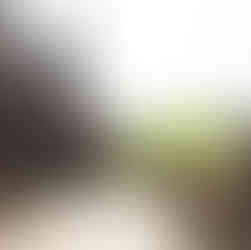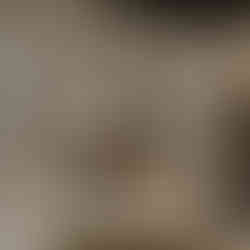Salay Yoke Sone Monastery with Variety of Fascinating Woodcarvings
- Thiha Lu Lin

- Feb 11, 2021
- 5 min read
It is thought that it is already known to all the monastery dating back to 1,244 Myanmar era emerged with the start of prosody describing “Aung Kyaw Hla Win with a variety of woodcarvings”. Yes, it is. It is the world-famous Yoke Sone Monastery situated in Salay Township, Magway Region, Myanmar.

A-nyar region, which means upper reaches of Ayeyawady river, has a wealth of Yoke Sone monasteries of which Salay Yoke Sone Monastery has gained global popularity. Salay Yoke Sone Monastery is famous for its age-old existence and every description of mysterious sculptural works. Unlike other Yoke Sone monasteries having woodcarvings depicting the episodes of 550 Jataka stories, its sculptural wood designs distinctly portray facial expressions of the characters involved in the woodcarvings.
Salay Yoke Sone Monastery starts to appear

Salay Yoke Sone Monastery was constructed in 1244 Myanmar era in the late period of Konebaung dynasty. It would be in 1882 Christian era. It was built by U Pho Kyi, a world-famous catechu merchant and wife Daw Shwe Thet and was donated to U Guna, assistant Sayadaw of Thudhama religious sect for residence. King Thibaw issued a formal diplomat note to extract teaks necessary for the construction of Yoke Sone Monastery from the State-owned forest with tax exemption.
In those days, official permission was usually granted to construct the monastery appropriate to morals, knowledge and power of the Sayadaw who will reside. It was in Konebaung period. The permitted model for U Guna, assistant Sayadaw of Thudhama religious sect contained four stairs. The monastery looked like a house with the royal design where the royal prince resided. In general, if the royal princes of those days became a king, their residences were usually donated to members of Sangha. The permission was granted to construct the house just like the one the royal prince resided in spite of being newly built.
All the timber was felled from the edge of Rakhine mountain range, and Yoke Sone Monastery was built by the carpenters and architects from Tanyaung (Sanyaug) village. It was learnt that all the materials related to the iron smelting including smithy were transferred and the responsible persons made arrangement for the design of iron the architects wanted to cast. One and a half to thirteen inches nails in size are cast at the monastery.
Salay Yoke Sone Monastery was built with a total of 154 long timber logs, and each can be put around by one’s arm in term of the circumference. Big and long timber logs can be impressively seen until now. Salay Yoke Sone Monastery is 154 feet in length and 76 feet in width. The hostels are as follows:
(1) Hostel with a tiered roof
(2) Sanu Hostel
(3) Hsaunghla Hostel (Zetawun Hostel)
(4) Hsaungma (Yuan Hostel)
(5) Khone Hostel
(6) West Hostel (Bawga Hostel)
There are roofless balconies and passageways around the hostels. Passage pillars are covered with sculptural pieces made with sandstones to prevent them from water erosion. The creation of brick stairs is a kind of appreciation. Railings are decorated with stuccoed mythical animals. Carved mythical animals are opened-mouth, and closed-mouth ones and each two of carved mythical animals are created. It was learnt that formerly, there were cook-houses at the back of Yoke Sone Monastery. In those days, the monasteries had cook-houses capable of supplying energy for enabling the Sayadaws to reside round the clock. Now they look as if they fell into ruin. The first-ever presiding Sayadaw of Yoke Sone Monastery was U Guna for whom King Mindon and Seintone Queen felt great admiration. The construction of Yoke Sone Monastery was completed in 1254 Myanmar era (1892 Christian era).

Yoke Sone Monastery with variety of woodcarvings
The woodcarvings hanging in the whole surface of the northern frontage of Yoke Sone Monastery gained global popularity. These woodcarvings depicted the episodes of 550 Jataka stories and Dhammapada not from the start to end, only the plot the creator liked and guessing the idea of the Sayadaw is also something interesting.
Unlike the other Yoke Sone Monasteries as mentioned before, it can be said the woodcarvings seem more precious as their facial expressions are sculpted in a thorough way. Those who created sculptures were famous sculptors U Shan and U Shwe Pyae. There were formerly a quite number of sculptures, but now only 26 sculptures have been left, some were lost and some stolen.
These sculptures were the works created from the Yadanabon period, and they were called woodcarvings with dramatic style. It was difficult to exactly reveal the idea of the original Sayadaw of Thudhama religious sect as the woodcarvings described each plot from the Jataka stories. In fact, just before finishing the construction of Yoke Sone Monastery, Myanmar king was arrested by the British, under the British rule, the Sayadaw of Thudhama religious sect was accused of social problems and brought to a trial as a witness where his reputation was blemished. When the case was over, the Sayadaw disappeared from the monastery without informing anyone until his death. For that reason, no one could explain the original idea and ambition of the Sayadaw.

Yoke Sone monastery-turned-to museum
Salay Yoke Sone Monastery existed for long since the last periods of Myanmar kings and British colonial administration has now turned to the museum, becoming a place of interest attracting local and foreign travellers. It is kept open from 9:30 am to 4:30 pm except for Mondays and government public holidays. Previously the entrance fee was fixed at K500 per adult, but now no entrance fee. The entrance fee for a foreigner is fixed at K5,000.
The visitors will be amazed by an abundance of woodcarvings depicting the episodes of Jataka tales along with the exterior scene of Yoke Sone Monastery. Along with the picture of U Pho Kyi, a donor of the monastery, fascinating displays of ancient artefacts discovered in and around Salay, Buddha images, sculptural objects, pots, stones, traditional handicrafts, thrones, palm-leaf inscription and Parabaik can be seen at Yoke Sone Monastery. According to the historical records, U Pho Kyi and his wife donated 45 sculptural images, ancient artefacts, palm-leaf inscriptions and Parabaiks to U Guna, the Sayadaw of Thudhama religious sect.

Salay ancient research museum in the back scene of Salay Yoke Sone Monastery
A small brick building located in the back of Salay Yoke Sone Monastery is an ancient research museum. It isn’t thought to be the one like this. On display inside are a lot of historical heritages such as a package of palm-leaf inscriptions with handwritten script by Salay U Ponnya, packages of palm-leaf inscriptions made with gold and other ancient artefacts discovered in and around Salay.

With Love,
Thiha Lu Lin (Thiha, the Traveller)
This article was published on "The Global New Light of Myanmar" daily newspaper.
Photo :: Thiha Lu Lin, Layong
Camera :: SONY Alpha 7II with 16-35mm Lens
Photos are modified in Lightroom by Thiha Lu Lin
Translated by Htut Htut (Twantay).
-03.png)



























































Comments